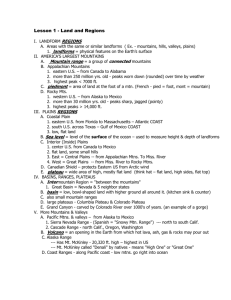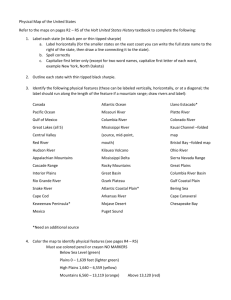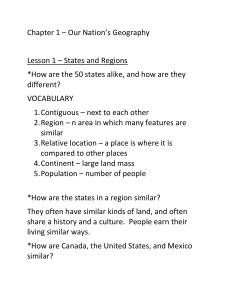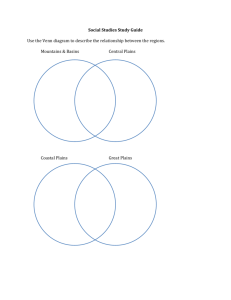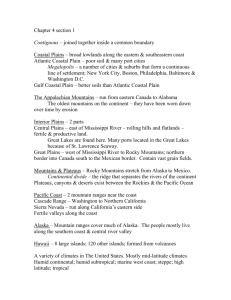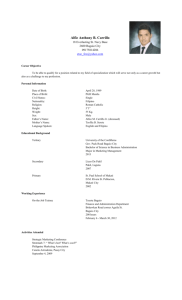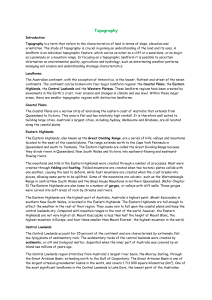North America – Physical Features - bms-geo6
advertisement
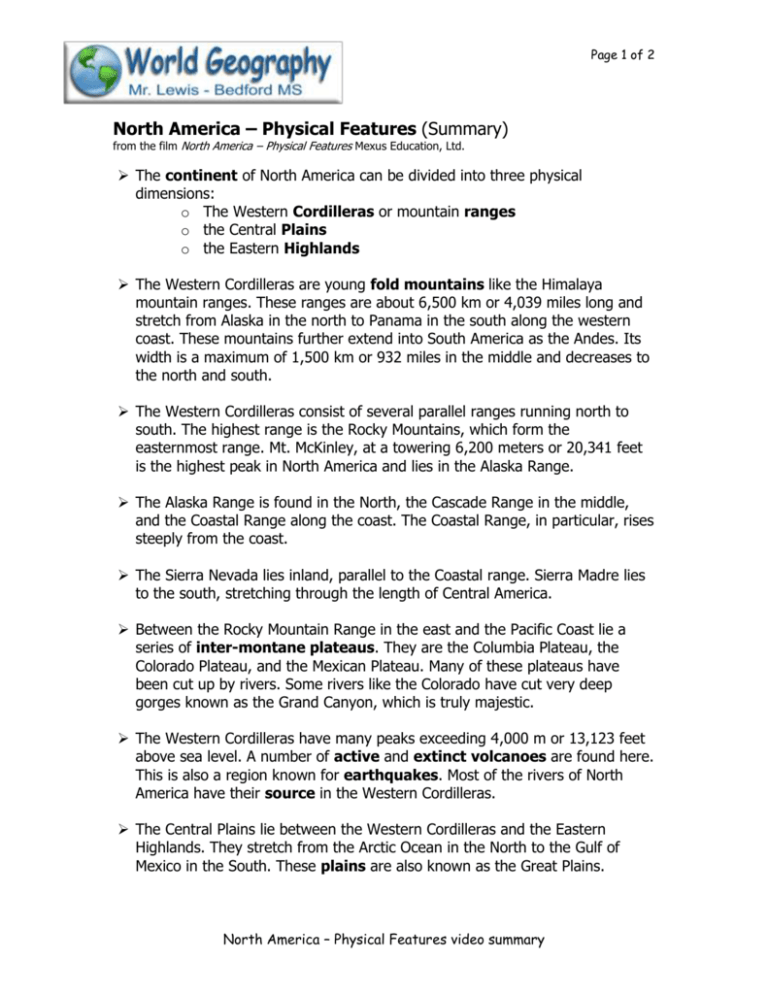
Page 1 of 2 North America – Physical Features (Summary) from the film North America – Physical Features Mexus Education, Ltd. The continent of North America can be divided into three physical dimensions: o The Western Cordilleras or mountain ranges o the Central Plains o the Eastern Highlands The Western Cordilleras are young fold mountains like the Himalaya mountain ranges. These ranges are about 6,500 km or 4,039 miles long and stretch from Alaska in the north to Panama in the south along the western coast. These mountains further extend into South America as the Andes. Its width is a maximum of 1,500 km or 932 miles in the middle and decreases to the north and south. The Western Cordilleras consist of several parallel ranges running north to south. The highest range is the Rocky Mountains, which form the easternmost range. Mt. McKinley, at a towering 6,200 meters or 20,341 feet is the highest peak in North America and lies in the Alaska Range. The Alaska Range is found in the North, the Cascade Range in the middle, and the Coastal Range along the coast. The Coastal Range, in particular, rises steeply from the coast. The Sierra Nevada lies inland, parallel to the Coastal range. Sierra Madre lies to the south, stretching through the length of Central America. Between the Rocky Mountain Range in the east and the Pacific Coast lie a series of inter-montane plateaus. They are the Columbia Plateau, the Colorado Plateau, and the Mexican Plateau. Many of these plateaus have been cut up by rivers. Some rivers like the Colorado have cut very deep gorges known as the Grand Canyon, which is truly majestic. The Western Cordilleras have many peaks exceeding 4,000 m or 13,123 feet above sea level. A number of active and extinct volcanoes are found here. This is also a region known for earthquakes. Most of the rivers of North America have their source in the Western Cordilleras. The Central Plains lie between the Western Cordilleras and the Eastern Highlands. They stretch from the Arctic Ocean in the North to the Gulf of Mexico in the South. These plains are also known as the Great Plains. North America – Physical Features video summary Page 2 of 2 The Northern part near the Hudson Bay is known as the Canadian Shield. It is made up of some of the oldest rocks in the world, like the Plateau of Africa and the Deccan Plateau of India. The Canadian Shield was covered with thick sheets of ice during the Ice Age about 18,000 years ago. Glaciers scooped out great hollows in the land as they slowly moved along. This resulted in the formation of thousands of depressions. When the glaciers melted, water filled these depressions, forming lakes. The Great Lakes of North America were formed this way. They are made of five fresh water lakes: Lake Superior, Lake Michigan, Lake Huron, Lake Erie, and Lake Ontario. Many short rivers drain the Canadian Shield and enter Hudson Bay. The Mackenzie, an important north-flowing river, empties into the Arctic Ocean. The Yukon flows through Canada and Alaska and empties into the Bering Sea. South of the Great Lakes lies the vast lowland drained by the Mississippi River and its tributaries. In the northern part, these lowlands are called the Prairies. The Mississippi River, along with its chief tributary the Missouri, is the third longest river in the world, with a length of 3,778 km or 2,348 miles. It forms a large delta before flowing into the Gulf of Mexico. The Mississippi River is richly celebrated in American literature. Mark Twain’s Tom Sawyer was set along the Mississippi River. In the west, the plains are quite high, where they are called the “High Plains”. These plains have been cut by numerous rivers and many deep valleys can be found here. The Eastern Highlands or the Appalachians are 2,575 km or 1,600 miles long chain of mountains stretching from the valley of the St. Lawrence River down through most of the eastern United States. They are not very high, Being below 2000 meters or 6,562 feet in most places. These are very old fold mountains and are made up of ancient rocks. To the east, the Eastern Highlands are flanked by the Piedmont Plateau which lies between mountain ranges on one side and plains or sea on the other. It slopes steeply down to the Atlantic Coastal Plain. North America – Physical Features video summary


